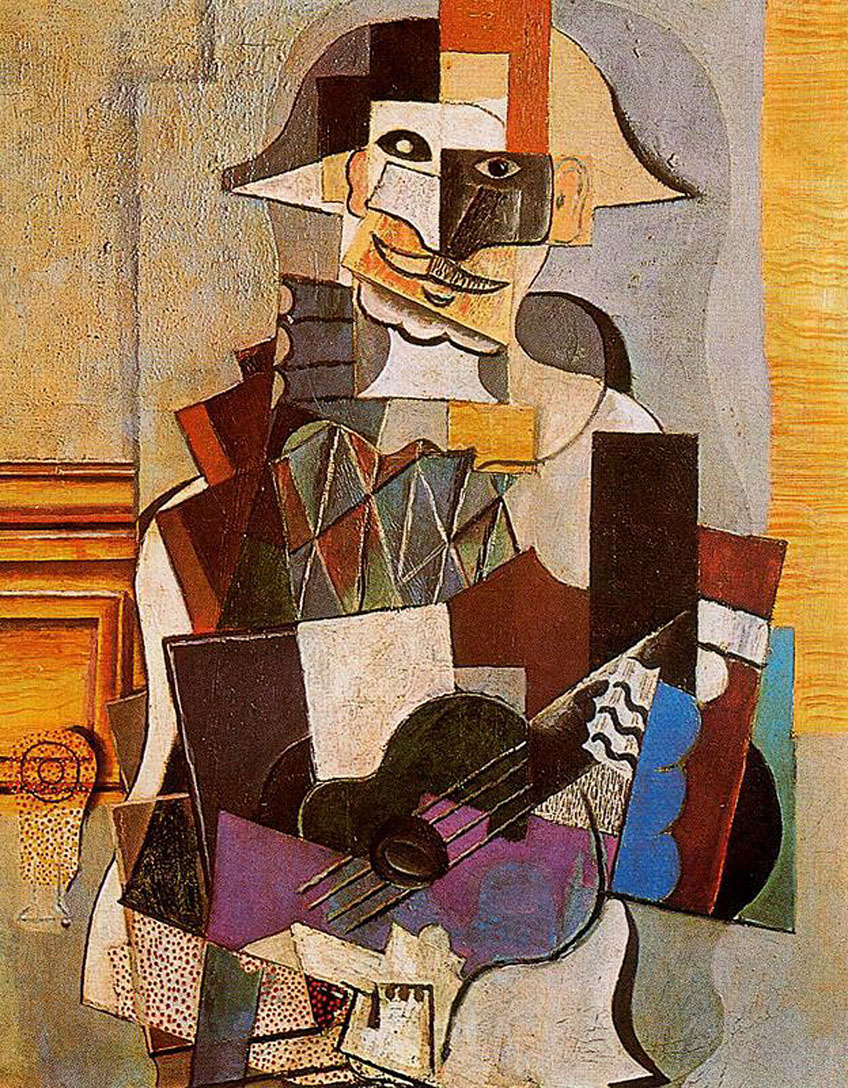
It soon became apparent that Pablo had little interest in school, but was an extremely talented artist. Legend has it that his first word was "piz", short for "pencil" in Spanish. His father was a painter and art teacher. Pablo Picasso grew up in Spain where he was born on October 25, 1881. Famous works: The Pipes of Pan, Three Musicians, Guernica, The Weeping Woman.Most of the images of Picasso's paintings are from his chronological gallery on. Journal for the Interdisciplinary Study of Literature. "The Great Parade: Cocteau, Picasso, Satie, Massine, Diaghilev-and T.S. If you are interested in reading more about this fascinating ballet, the first of its kind and the first collaborative work between these two icons of art and literature, I recommend: But don't take my word for it go see the exhibition, check out his fabulous representations of instruments at the CMA (especially the guitars from 19) and get inspired.

The reason Picasso's works have lasted as icons of their time and catalysts of change within the history of music and art is because Picasso sought collaboration and input from other artists, poets, and musicians. (1926)Īfter Parade, Pablo Picasso went on to work with composers such as Stravinsky, Pergolese, DeFalla and Milhaud a veritable who's who of 20th Century, European composition. Picasso, Cocteau, Stravinsky, and Hohlova stand together as friends and collaborative artists. Much like Picasso's visual Cubism, Varèse's "sound blocks" give the impression of disjointed figures and patterns that function both together and piecemeal.ĭuring this exploration of Cubism and the subsequent shift to Neo-Classism from 1905-1911, the artist painted many highly abstracted depictions of musical instruments and musicians.

In particular, Picasso steeped himself in Cézanne's philosophy of the geometric importance in art of the cube, the cone and the sphere.ĭuring this time, geometry fascinated composers such as Picasso's own friend Edgard Varèse. He followed in the footsteps of painters before him such as Toulouse-Lautrec, Paul Gauguin and Paul Cézanne. Picasso was not the first to become enamored with the flashes of bright colors and brash lines of African art. This sort of Classicism still exists today in music, just look at the relationship between Western theory and Jazz studies in most U.S. Wikiart public domain Picasso's painting, "Head of A Man" could easily be his representation of the African art he studied during his time in Holland. One thing Picasso was not, however, is stagnant. Of course, he never seems to have been without a lover, or two, as well.

Pablo Picasso was many things to many people - he had a large social circle that included everyone from composers such as Stravinsky and Poulenc as well as artists and authors such as Jean Cocteau. Here's a look at Picasso's relationship with music in honor of the Columbus Museum of Art's exhibition, Picasso: The Great War, Experimentation and Change.

One painting from this period has served as hallmark for this blue period and music-in-art ever since The Old Guitarist. But that wasn't Picasso's only depiction of music and musicians, in fact, it was a subject to which he returned quite often.Īlong with his many visceral, female muses, Pablo Picasso clearly saw music as a muse. He even painted posthumous portraits of his longtime friend. For nearly four years, the artist painted in somber, subdued tones of washed-out blue and sickly yellows. In late 1903, Pablo Picasso was living and working in Barcelona and still mourning the loss of his dear friend Carlos Casagemas.


 0 kommentar(er)
0 kommentar(er)
